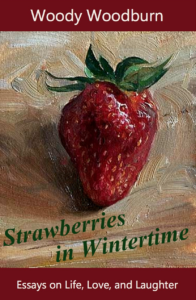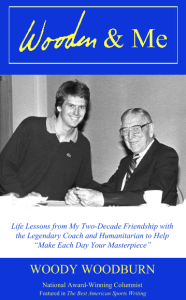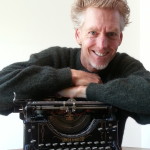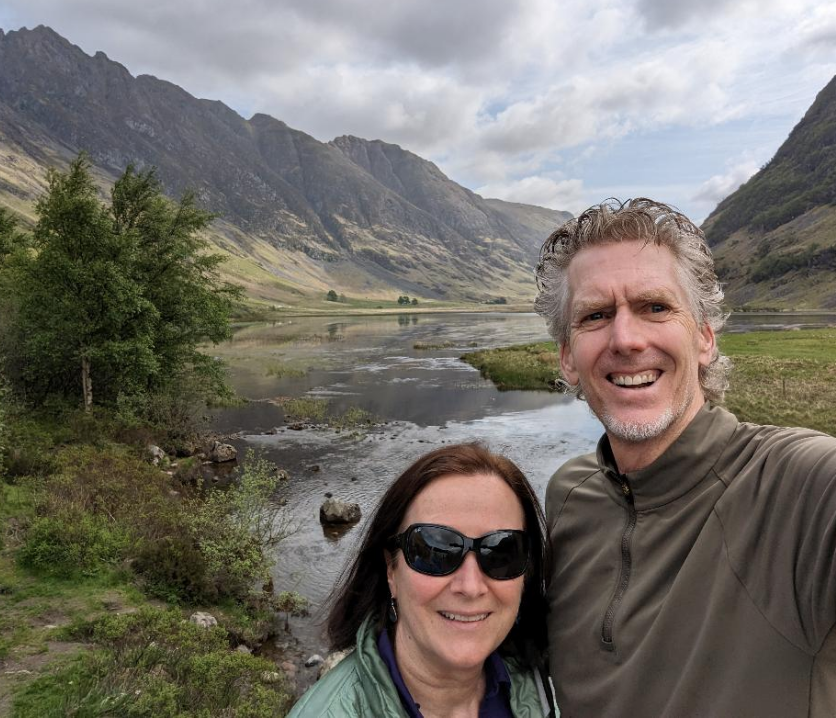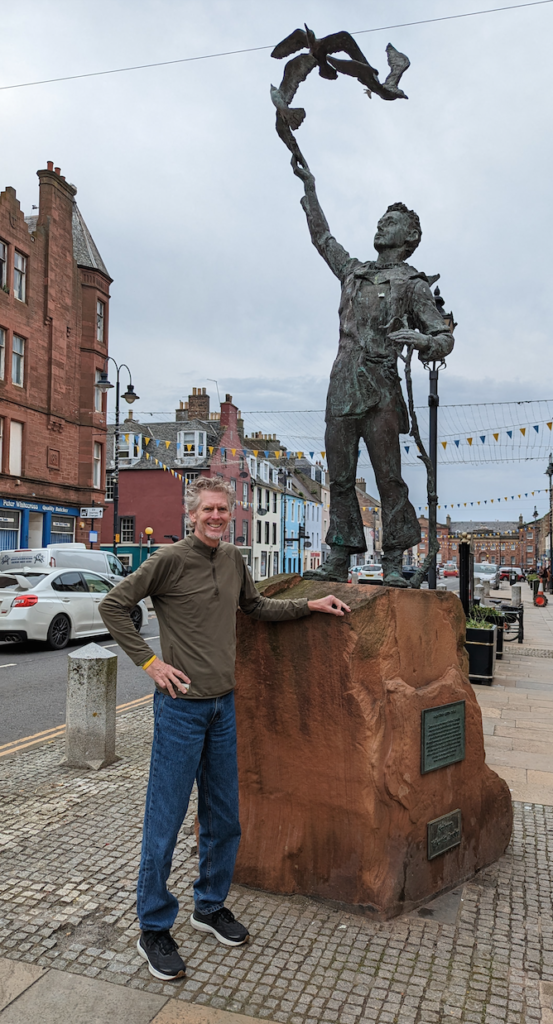Woody’s debut novel “The Butterfly Tree: An Extraordinary Saga of Seven Generations” will be published on March 19 and available at all online stores or ordered at local bookshops.
*
Like John Muir’s Scottish boyhood home-turned-museum in Dunbar, “The Writer’s Museum” on the historic Royal Mile in Edinburg was once a three-story residence. Dating to 1622, as Lady Stair’s House, the latter is now dedicated to the lives of three favorite-son wordsmiths: Robert Burns, Sir Walter Scott, and Robert Louis Stevenson.
Time and again on our recent trip, My Better Half and I crossed paths with this famous literary trio—in parks with their statues, pubs with their portraits, even their footsteps in Edinburgh Castle where the 16th-century “Honours of Scotland” crown jewels are on display. Hidden from enemy forces, and lost, the priceless scepter, sword, and crown were found a hundred years later by Sir Walter Scott.
Mr. Stevenson’s words, meanwhile, can be found engraved on plaques and painted on public walls with commonplaceness throughout Scotland, including this popular quote: “To travel hopefully is a better thing than to arrive.”
And yet, with apologies to the author of “Treasure Island,” I found the opposite to be true on our day of treasured travel through the Highlands to Loch Ness. To be honest, I had not expected much; certainly I did not anticipate seeing the famous monster; but I was awed by the ruggedly bucolic scenery and immenseness of the bottomless waters.
Loch Ness is nearly a marathon’s distance long, 23 miles to be precise, and so deep that only two humans, in a diving bell, have reached its bottom. That is 10 fewer people than have walked on the moon and here is an even more jaw-dropping figure: Loch Ness is said to contain more water than all the lakes and rivers in England and Wales combined.
Perhaps most startling of all is the color of the water—black, coal black, black as midnight even in daylight due to peat tannins runoff from surrounding foothills. Underwater you cannot see six inches in front of your nose, our guide Brian noted.
Speaking of water, no sooner had our Loch Ness boat tour begun when Brian informed us that “whisky”—with no “e” in Scotland, he emphasized—means “water of life.” He continued, with a wink and a raised flask: “The more whisky you drink, the better chance you have of seeing Nessie!”
Nessie, of course, is the celebrated Loch Ness Monster. Truth be told, even sober as a saint, for it was barley noon and neither MBH nor I had followed the wee impish Scotsman’s breakfast example from the previous day by adding a splash of “water of life” to our coffee, we did see Nessie…
…on T-shirts, ball caps, refrigerator magnets, tea towels and a thousand more items in the souvenir shop.
Instead of a Brontosaurus-necked tchotchke, my favorite Loch Ness keepsake is a short story Brian, wearing long socks and a kilt, shared in a tartan brogue as thick as his build which was as stout as a refrigerator on which to put a Nessie magnet: “I had an investment banker on my tour, a bigwig successful guy, who scoffed at what a boring job I had giving the same tour day after day.
“So I asked him,” Brian continued. “ ‘Do you go to the same office every day?’
“ ‘Yes, with a corner view, for 35 years,’ he answered, proudly.
“And I said, ‘Well, this is my office…’ ”
Brian spread his arms wide, wide as the wingspan of the bald eagle we saw moments earlier floating on an updraft, then swept a hand across the stunning Highlands landscape.
“ ‘…and it gets redecorated every day.’ ”
Next week: The angel’s share and Titanic tears.
* * *
Woody’s debut novel “The Butterfly Tree: An Extraordinary Saga of Seven Generations” will be published on March 19 and available on Amazon and other online stores or can be ordered at all bookshops.
Essay copyrights Woody Woodburn
Woody writes a weekly column for The Ventura County Star and can be contacted at WoodyWriter@gmail.com. Follow him on Twitter and Instagram at @woodywoodburn. His SIGNED books are available at www.WoodyWoodburn.com.
